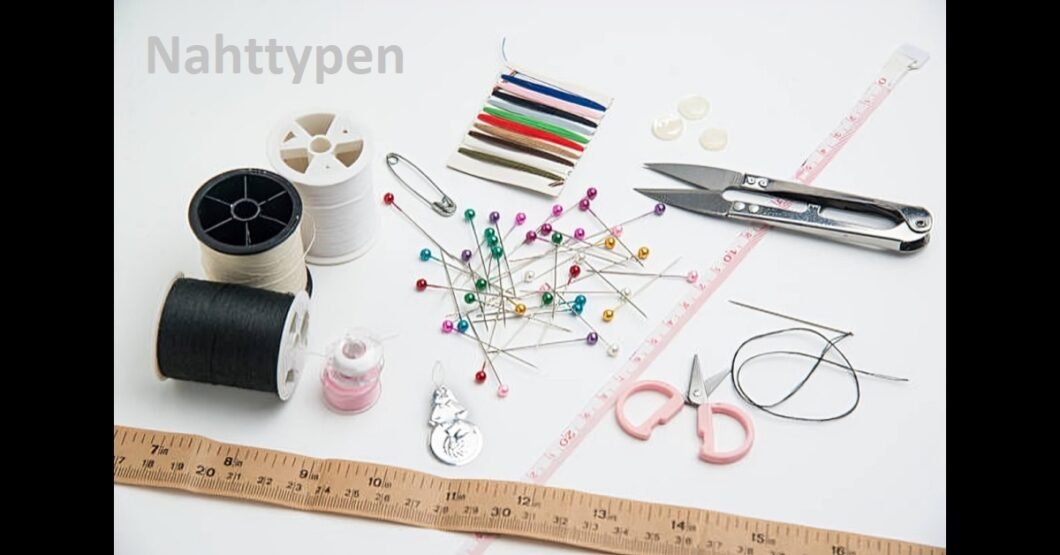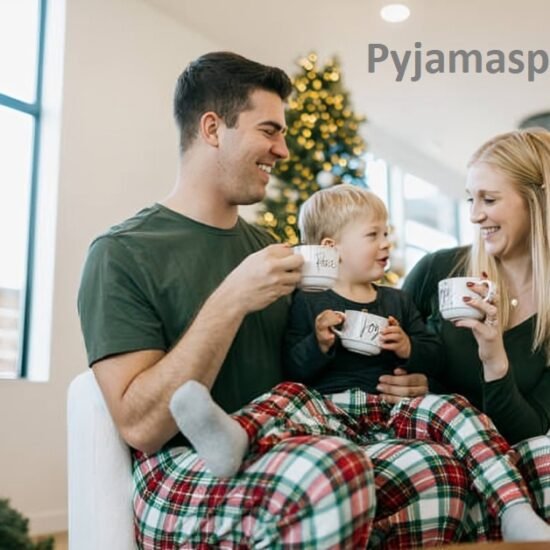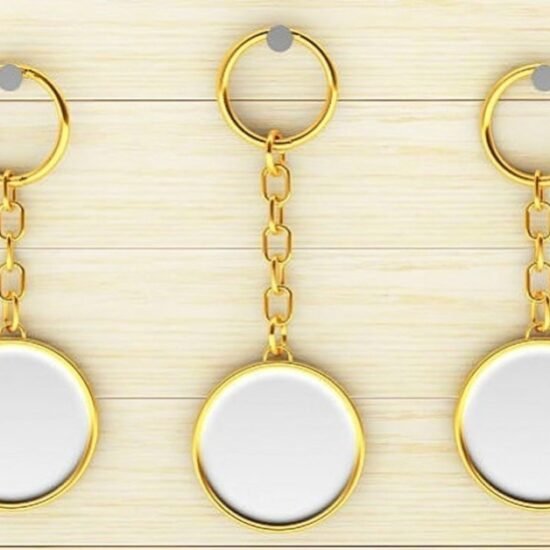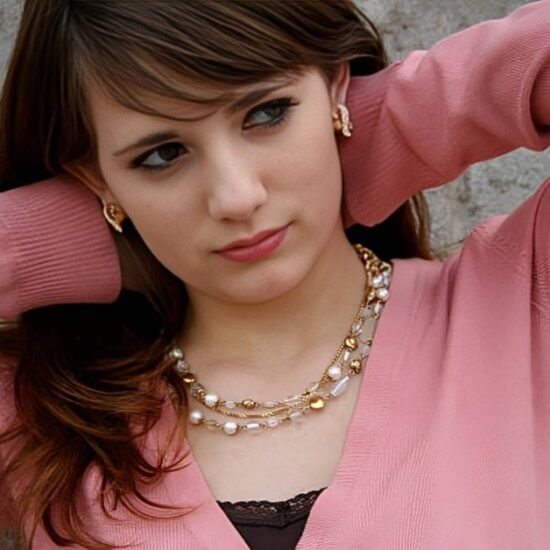Introduction
Understanding handicraft and seam techniques is becoming more and more important in a culture that is fixated on rapid fashion and machine-made fabrics. Knowing your Nahttypen (German for seam types) may make your creative endeavors look beautiful, whether you’re a sewing enthusiast, fashion designer, textile artist, or simply a do-it-yourselfer.
Nahttypen are the cornerstone of clothing structure, texture definition, and artistic expression; they are more than just stitching lines. Every form of seam has a unique structural strength, look, flexibility, and finish, making them essential for anything from home sewing to haute couture.
The ten main Nahttypen will be covered in this tutorial, along with their applications, ideal materials, and inventive ways to incorporate them into your next fabric creation. To improve your skill set, you’ll also get simple-to-follow tables, practical use examples, and sewing inspiration.
Since strong seams are always the foundation of great style, let’s sew our way into this crucial aspect of fabric manufacturing.
What Are Nahttypen? Understanding the Basics of Seam Types
The term “Nahttypen” describes the various kinds of seams used in fashion design and stitching. A seam is the line where two pieces of cloth are kept together, and the sort of seam dictates not just function but also style.
Why Seam Types Matter in Creative Design:
- Function: While certain seams provide strength, others offer elasticity.
- Aesthetics: Some, like French or flat-felled seams, are ornamental.
- Flexibility: The type of seam depends on whether the cloth is thick, stretchy, or sheer.
- Construction: Well-sewn clothing maintains its shape and withstands use.
Seam Design Decisions:
- What kind of cloth are you using?
- Is the seam functional or ornamental?
- Is it going to be exposed or under tension?
Sewing must be viewed as an opportunity as well as a function by a creative fabric creator.
Plain Seam: The Foundation of All Nahttypen
The most fundamental and popular sort of seam in sewing is the plain seam, which is particularly good for novices.
Features:
- A straight stitch used to connect two layers of fabric
- Finishing options include overlock, zigzag stitch, and pinking shears.
- utilized in dressmaking, armholes, and side seams
Ideal For:
- Linen
- Cotton
- Lightweight textiles
Use Case:
Using only simple seams, a fashion student created a whole line of eco-cotton gowns that were quick to complete and simple to modify.
Pros:
- Quick to stitch.
- Adaptable for novices
- Compatible with the majority of textiles
Cons:
- Seam finishing is required.
- can easily fray if left incomplete.
The simple seam demonstrates how mastering fundamental methods can result in beautiful designs.
French Seam: The Seam of Elegance and Precision
The French seam is a double-sewn seam with enclosed edges that gives good textiles a polished, expert appearance.
Where to Use It:
- Sheer textiles
- blouses made of silk
- Underwear
- Wedding attire
Procedure:
- Sew the wrong sides of the fabric together.
- With right sides together, trim, press, and resew.
- contains the raw edge within the seam.
Comparison Table:
| Seam Type | Enclosed Edge | Visibility | Difficulty |
| Plain Seam | ❌ No | Minimal | Easy |
| French Seam | ✅ Yes | None | Moderate |
Key Benefits:
- A polished and seamless finish
- adds a weightless framework
- Perfect for fraying fabrics
If you want your interior to be as lovely as your exterior, French seams are ideal.
Flat-Felled Seam: Strength Meets Style
The flat-felled seam, which is durable but aesthetically pleasing, is common in denim and sportswear.
Qualities:
- bare edges that are enclosed by a topstitched seam
- seen wearing jeans, sportswear, and outerwear.
- enduring and long-lasting
Top-Rated Materials:
- Canvas
- Denim Twill
- Synthetic Blends
Common Applications:
- Jeans with side seams
- Workwear jackets with noticeable stitching
Benefits:
- Extremely robust
- No more finishing is needed.
- gives a touch of industrial chic
Flat-felled seams combine a stylish look with strength.
Lapped Seam: Overlapping Technique for Design Details
One edge of the cloth overlaps the other in a lapped seam, which serves as both a functional and decorative element.
Important Features:
- Twin-needle topstitch is frequently used to secure
- provides a unique appearance of layered patterns.
- Perfect for vinyl, felt, and leather
Use It For:
- Ornamental topstitching
- Panel or tab connections
- Simple outerwear
Any garment’s lines and structure can be creatively manipulated with lapped seams.
Bound Seam: Stylish Edges with Bias Tape
Bias binding is used to finish the raw edges with bound seams for a clean interior or a splash of color.
Where Popular:
- Jackets that are reversible
- Home furnishings (cushions, pillows)
- Sewing heirlooms
Benefits
- Enhances the appearance of a professional
- Prevents fraying without using excessive locks.
- Personalized using patterned bias tape
Fabric Compatibility:
| Fabric Type | Bias Binding Match |
| Wool | Cotton bias tape |
| Silk | Satin bias for luxe appeal |
| Canvas | Contrasting printed cotton |
The language of detail-oriented design is communicated via a bonded seam.
Double-Stitched Seam: Reinforced for Movement
The double-stitched seam offers an extra degree of assurance when strength is vitally essential.
Perfect For:
- Sportswear
- Children’s apparel
- Stressed-out bags and crafts
- Utility clothes
How It Operates:
- Two stitching rows in parallel
- The seam (open, closed, or covered) determines the final appearance.
Highlights:
- Almost indestructible
- adds an athletic, sporty appearance
- improves the stitching design
Sturdy and fashionable, the double stitch demonstrates your versatility.
Turned-and-Stitched Seam: Functional Minimalism
Casual clothing and light home décor frequently use this style of seam.
Qualities:
- The edge of the fabric is sewn under.
- Unobtrusive, basic finish
- Keeps materials like lawn cotton and linen from fraying.
Ideal For:
- seams inside non-stretch fabrics
- Basic pillowcases and blouses
It’s a low-bulk method that maintains cleanliness and lightness.
Nahttypen Selection Guide Based on Fabric and Project
The secret to success in textile design is selecting the appropriate seam.
Table: Which Nahttypen Fits Best?
| Fabric Type | Best Seam Type | Why |
| Silk/Sheer | French Seam | Gentle, fray-resistant, enclosed edges |
| Denim/Twill | Flat-Felled Seam | Strong + visible design element |
| Canvas/Heavy Cot. | Lapped Seam | Handles bulk, offers structural layers |
| Jersey/Knits | Serger Stretch Seam | Flexes with garment motion |
| Cotton Lawn | Turned-and-Stitched | Keeps airy feel, neat finish |
For optimal results, always match the behavior of the seam to the fabric.
Creative Applications: Using Nahttypen Beyond Clothing
Innovative Uses:
- Artist bookbinding: Decorative stitching on notebook spines is known as.
- Tote bags: Using statement topstitching as part of the design.
- Scarves: Edges with contrast stitching for a gallery appearance.
- Textile Art Panels: Lapped seams show layers of color underneath.
Nahttypen gives art not just fashion—structure. Let them inspire the concept for your next endeavor.
Common Mistakes & How to Avoid Them
Even seasoned seamstresses make blunders. Here are some things to be aware of:
- Using the incorrect needle and thread can result in puckering or skipped stitches.
- Insufficient seam allowance results in a weak seam.
- disregarding the behavior of the fabric (stretch, fray)
- Not supporting stress points or edges
- hurriedly pressing and completing the steps
Tips:
- Always use scrap fabric to test the sort of seam.
- Be cautious when pressing, especially around curves.
- Make use of the proper stitch length and presser foot.
FAQs
What does “Nahttypen” imply in English?
The German word for seam kinds, or the various ways that fabric is sewn together, is “nahttypen.”
Which seam is most suitable for novices?
For all kinds of fabric, the plain seam is the most straightforward and adaptable.
Are different seams required for different fabrics?
Indeed. Certain sorts of seams are necessary for the durability and design of textiles that are heavy, delicate, or stretchy.
Can you see every Nahttypen?
No. Some are decorative (lapped, flat-felled), while others have a clean, hidden finish (French seam).
Are artistic seams able to be both fashionable and robust?
Of course. Many types of seams strike a compromise between style and utility, particularly in artisan and slow fashion textiles.
Conclusion
Nahttypen may start off as useful stitching techniques, but in skilled hands, they transform into artistic manifestations and symbols of exquisite craftsmanship.
Not only tailors need to understand the many sorts of seams. It is for anyone who transforms fabric into creative works, whether it is for clothing, gallery art, accessories, or interior design.
Therefore, the next time you grab your thread and fabric, take a moment to let your design philosophy be shown via your seams. Functionality may be transformed into a beautiful piece of art with the correct Nahttypen.




